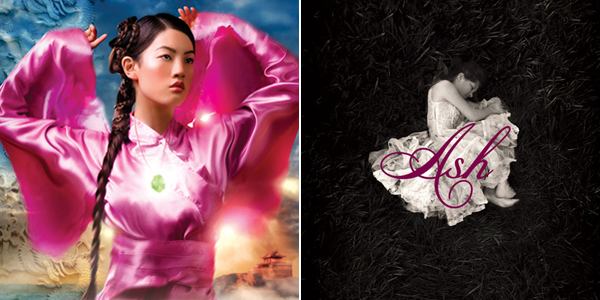How to Make Young Adult Fiction More Diverse
Malinda Lo and Cindy Pon are trying to show that books for young readers do not have to feature only white, straight characters

Little, Brown/Greenwillow Books
Forget the vampire invasion or the mania for dystopian stories. Some authors think the truly troubling trend in young adult fiction is that most characters are predominantly white and straight—even after the genre's expansion in recent years. So authors Malinda Lo (Ash, Huntress) and Cindy Pon (Silver Phoenix, Fury of the Phoenix) decided to do something about it: They created the Diversity in YA Fiction website and launched an accompanying speaking tour. Lo said her goal with the site was less to convince authors to write differently and more to highlight the diversity that was already present in YA: characters of a broad mix of races, ethnicities, sexualities, physical abilities, and more.
Pon says that she and Lo had long joked about touring together, and when they found out that their second novels would be released around the same time, they decided to actually do it. As two Asian-American writers, it was natural to tour "under the banner of celebrating diversity," as Pon put it. They chose cities where other authors who write about a wide range of characters live, and invited a different group of writers to join them at each tour stop.
At a recent event at the Cambridge Public Library in Massachusetts, Pon and Lo were joined by Holly Black (author of the Curse Workers series), Sarah Rees Brennan (the Demon's Lexicon trilogy), Deva Fagan (Fortune's Folly, Circus Galacticus), and Francisco X. Stork (The Last Summer of the Death Warriors). Lo told me that they were happy that a few teens showed up, but "we were also very much targeting librarians, bloggers, educators, and other members of the book business with our tour. YA books are often delivered to teens via these gatekeepers, so we wanted to make sure that they were part of the diversity discussion."
The panelist who traveled the farthest for the event was Rees Brennan, who lives in Ireland. "I think we all have to write the change we want to see in the world," she said. "And wanting the world to be better is something every person wants—and wanting to write better and more interesting books is something every writer wants." For Rees Brennan, reading and writing about diverse characters, regardless of genre, is just more interesting. The characters in her trilogy about British teenagers hunting demons include a black girl, a disabled boy, and several gay characters. She told me: "I think writing with attention to the different world people see, and the different issues they face, makes you a better writer - and with luck makes the reader see a different world."
Marketing concerns, of course, play a big role in all of this. Conventional wisdom assumes that white kids won't pick up a book that has a picture of a person of color on the cover, and there have been controversial incidents of YA covers being "whitewashed" in recent years. One of the most widely-publicized examples was the cover of Justine Larbalestier's Liar: her publishers planned to have a white model stand in for her black main character until they bowed to her objections and public outcry.
Pon worries that a book with an Asian-American on the cover will be seen as a book for Asian-Americans, when in fact her books are aimed at fantasy lovers, not a specifically ethnic audience. For similar reasons, Malinda Lo noted her publishers try to "disguise" the fact that the main character in her retelling of Cinderella is a lesbian by not making it clear in the jacket copy or beginning of the book. While many readers are surprised to discover the identity of the character's love interest, "some are okay with it" even though they might not have picked up a novel marketed as LGBTQ.
The authors were unanimous in their belief that "anyone should be able to write about anyone," as Stork put it. Most of his books are about Latino teen boys, but his goal is to write good stories, not Latino stories. Stork and the rest of the authors thoroughly reject the idea that only authors who are part of a given minority group should be "allowed" to write characters who are part of that group. Pon applauds anyone who "writes beyond their own personal experience," but pointed out that it's important for authors to do extra research and extend more respect to the experiences of others when writing about things they haven't lived through themselves. "We have an obligation as writers to represent the world we live in," said Holly Black, "[but] doing it badly is not better than not doing it."
The tour has ended now, but Lo tells me that the site will keep going strong at least throughout 2011, and she's happy that readers are already asking for a second tour. Because she and Pon organized and financed the tour themselves, there are currently no plans for a follow-up, but they are working on putting together panels for events like the World Fantasy Convention. She is committed to keeping the discussion going. "If we want to see a world that is full of diverse stories, every one of us has a responsibility to do our own part to make that happen."
What's the one thing these authors would like people to know about YA? Lo: "The goal is not to teach moral lessons to teenagers." And Pon: "That it's good literature. That it's not beneath them." For Rees Brennan, it's all about the characters, and diversity is a big part of that: "Bad home lives, good home lives, different cultures: make the characters seem like real people, and reflect the diversity of reality. It's a pretty gorgeous kaleidoscope."
Read all the posts in our Young Adult Fiction series.